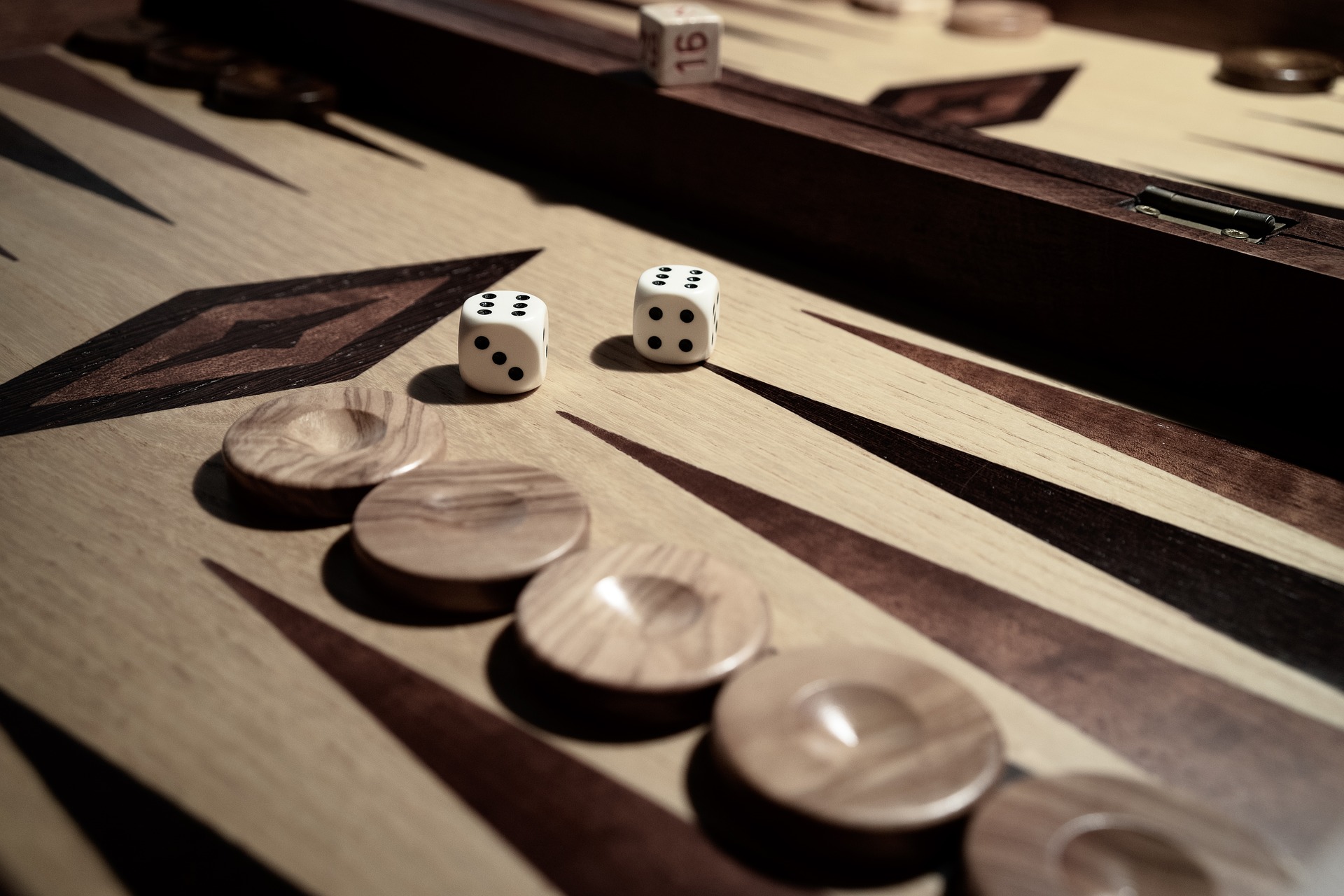A Kid's Guide to Playing Backgammon

Backgammon is a strategy game for two players. The goal is to remove all of your checkers from the board so you can win the game. It's an easy game to learn and fun to play with family and friends!
Backgammon Equipment
You don't need much to get started playing backgammon! You can find the board game in any store that sells toys and games. The board game comes with all the equipment you need, but if you ever lose pieces, here are the pieces you need:
- Backgammon board
- 30 checkers, 15 white and 15 black
- Two dice for each player
Terminology
Like all games, backgammon comes with its own vocabulary. It may take a little getting used to at first, but there aren't too many words to learn.
- Checker: The game pieces that players move around the board
- Point: A triangle-shaped space on the board. The backgammon board has 24 points on it, and each one is given a number.
- Middle Bar: The bar that separates the two sides of the backgammon board
- Home Board: The six points at the bottom right of the backgammon board if you're playing white or the bottom left of the board if you're playing black
How to Set Up the Backgammon Board
Setting up your board is very simple. The two players sit across from one another, and everything you do for setup mirrors what your opponent does.
- Five checkers will be put on the 6-point.
- Three checkers are put on the 8-point.
- Five checkers are put on the 13-point.
- Two checkers are put on the 24-point.
Playing the Game
To start the game, each player rolls one of their dice. Whichever player gets the higher number goes first; if you tie, roll again. The player who goes first uses the two numbers on the dice as their first roll.
- The rolled numbers on the dice represent two separate moves. For example, if you roll a 2 and a 4, you can choose to either move one checker 2 spaces and another checker 4 spaces or move one checker 6 spaces.
- If your die lands on a checker, outside the board, or leaning against the edge of the board, you have to reroll it because it's not considered a valid move.
- When you move your checkers, they have to be moved to an open point along the path from your opponent's home court to your own side. An open point is defined as any point on the board that is not currently occupied by 2 or more opposing checkers.
- If you roll doubles, then you've earned two extra moves.
- If you roll a number but you can't find an open point on any of those numbers to move a checker to, then you lose a turn. If you can only play one number, then you only lose your turn on one of your dice.
- When you move a checker onto a point that has one of your opponent's checkers, the opponent's checker is moved onto the middle bar. Any checker of yours that's on the middle bar must be returned to play on the point farthest away from you before you can make any other moves.
- When one player's checkers are all within their home board, they can start removing checkers from the board. The first person to remove all of their checkers from the board wins.
- If you don't have any checkers off of the board by the time your opponent has removed all of theirs, it's called a gammon.
- If you still have a checker on your opponent's home board or on the bar after they have removed all their checkers, it's known as a backgammon.
Additional Resources
- Backgammon Is as Easy as 1-2-3
- Backgammon Board Game Guide for Beginners
- Backgammon Rules
- All About Backgammon
- Doubling the Stakes in Backgammon
- Backgammon Game Guide
- How to Play Backgammon
- Official Game Rules for Backgammon
- Backgammon Rules for Beginners
- Backgammon Games
- Backgammon Games and Rules
- The Basic Rules for Backgammon
- Backgammon FAQs and Tips
- Beginner Mistakes in Backgammon
- Backgammon Tips and Tricks for Beginners
- Backgammon Basics and Tips
- Basic Strategy for Beginners
- Game Rules for Backgammon
- Group Games 101: Backgammon
- Backgammon Basics Guide
- Backgammon Boards
Edited by: Ben Thompson

